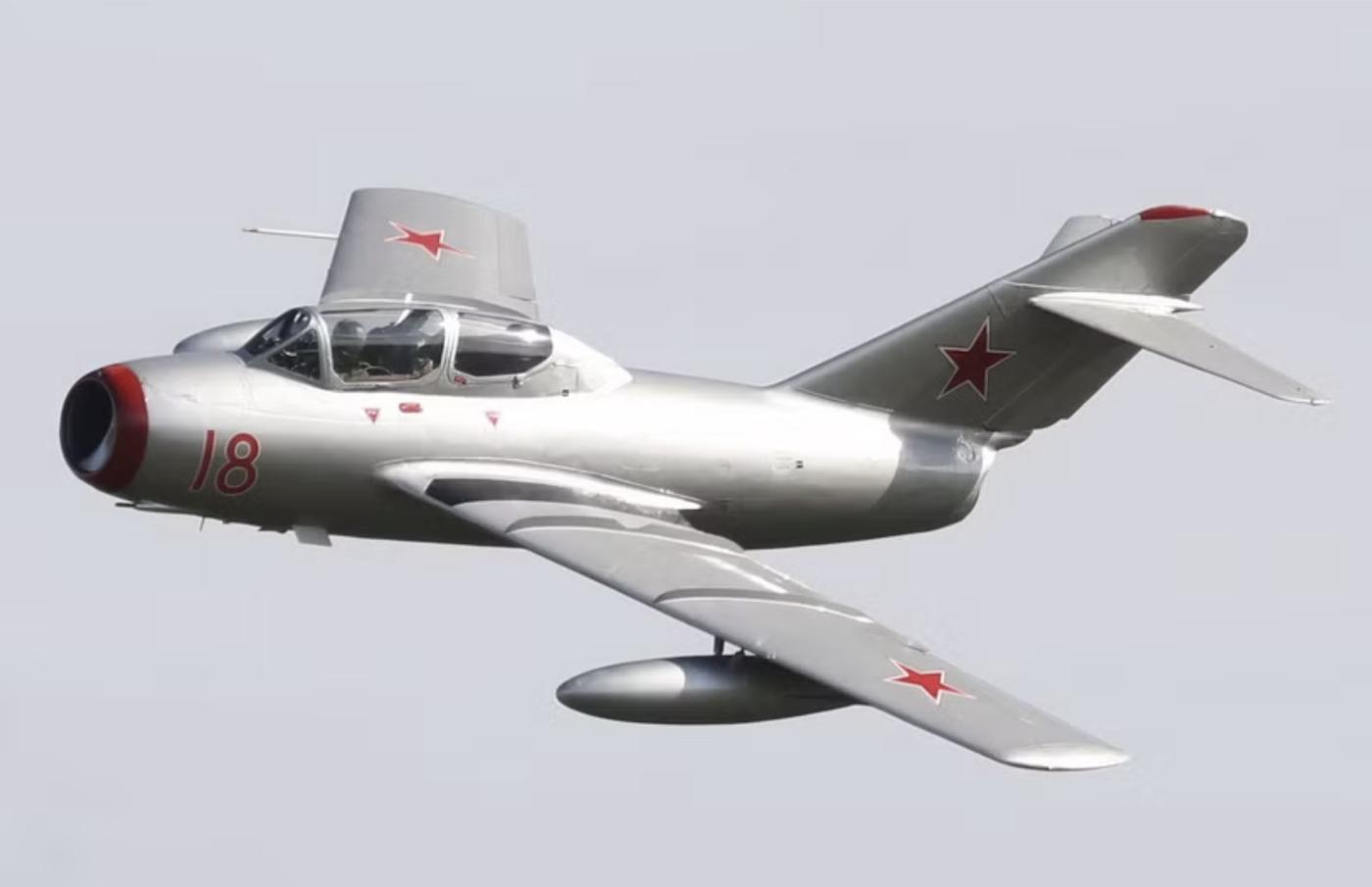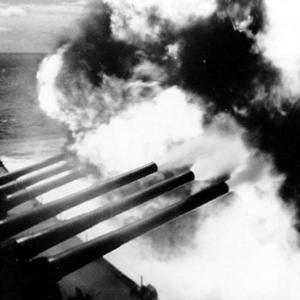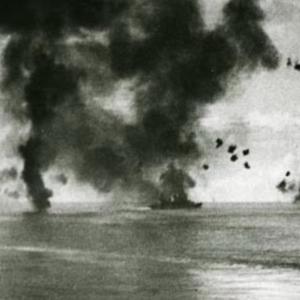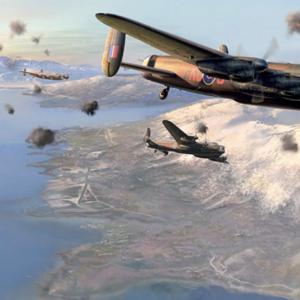
Mig-15 Fighter Jet
The Mikoyan-Gurevich MiG-15 was one of the most significant and influential jet fighters of the 20th century, marking a turning point in the history of aerial warfare. Developed by the Soviet Union in the late 1940s, the MiG-15 was among the first successful jet aircraft to incorporate swept wings, which dramatically improved its aerodynamic performance at transonic speeds. The prototype first flew in December 1947, and it entered Soviet Air Force service in 1949. Designed by Artem Mikoyan and Mikhail Gurevich, the MiG-15 was powered by the Klimov VK-1 turbojet engine—a Soviet-built version of the British Rolls-Royce Nene engine, which had been sold to the USSR under a short-sighted postwar technology deal. This engine provided around 5,950 pounds of thrust, giving the aircraft excellent speed and climb capabilities for its time.
The MiG-15 was built with high-altitude performance and heavy firepower in mind, particularly to counter the threat posed by Western strategic bombers. Its armament was especially powerful for a fighter of its size: it carried a single 37mm Nudelman N-37 cannon and two 23mm NR-23 cannons, mounted in the lower nose section. This combination allowed it to effectively engage and destroy large, heavily armored bombers with only a few hits. The MiG-15 could reach speeds of over 1,075 km/h (668 mph), had a service ceiling of approximately 15,500 meters (50,900 feet), and could climb rapidly—capabilities that rivaled or exceeded those of its early Western counterparts.
The Korean War (1950–1953) was the MiG-15’s first major combat test, and it quickly proved its worth in the skies. Although officially operated by the North Korean and Chinese air forces, many MiG-15s were secretly flown by experienced Soviet pilots, especially during the critical early years of the conflict. The MiG-15 posed a serious challenge to U.S. air superiority, particularly in an area near the Chinese border nicknamed “MiG Alley.” This zone became the site of some of the first large-scale jet-on-jet dogfights in military history, as MiG-15s engaged American F-80 Shooting Stars, F-84 Thunderjets, and eventually the more capable F-86 Sabre.
The aircraft's effectiveness was first demonstrated when MiG-15s began intercepting American B-29 Superfortress bombers. The B-29s, which had flown unchallenged during World War II, were now vulnerable to the MiG’s speed, agility, and powerful cannons. Losses mounted quickly, and the U.S. was forced to restrict daytime bombing missions, switching instead to nighttime raids or escorting bombers with F-86 fighters. The resulting dogfights between MiG-15s and F-86 Sabres became legendary, with both sides claiming superiority. While American sources often reported a kill ratio in favor of the Sabre, declassified Soviet records suggest the margin may have been narrower than originally believed.
Beyond its combat performance, the MiG-15 had a wide-reaching geopolitical impact. Its success stunned Western military analysts, who had underestimated Soviet aviation capabilities. Until then, the U.S. and its allies assumed they had a clear technological advantage in jet aircraft development. The appearance of the MiG-15 shattered that belief and triggered a rapid escalation in aircraft research and production. In response, the United States accelerated work on next-generation jets and poured resources into training and technology to regain the edge in aerial combat.
The MiG-15 was not only used by the Soviet Union and its immediate allies during the Korean War but was also exported to dozens of nations around the world. Countries across the Eastern Bloc and others aligned with the Soviet Union, such as North Korea, China, Vietnam, Egypt, and Poland, received MiG-15s as part of military assistance agreements. In total, it is estimated that between 13,000 and 18,000 MiG-15s were produced worldwide, including licensed copies like the Chinese Shenyang J-2 and Czechoslovak-built versions. It remained in frontline service in many countries well into the 1960s and continued to serve in training or reserve roles even longer.
Despite its relatively short frontline career in Soviet service—soon replaced by more advanced aircraft like the MiG-17 and MiG-19—the MiG-15 had a lasting influence on jet fighter design. It demonstrated the effectiveness of swept-wing aerodynamics, emphasized the importance of firepower in intercepting bombers, and set a new standard for performance in early Cold War aerial combat. Many future Soviet and even Western aircraft borrowed elements of its design or were built specifically to counter its capabilities.
Today, surviving MiG-15s can be found in museums, on static display, and even in private collections, with some restored to flying condition. Its legacy lives on not only through its direct combat record but also through the profound shift it caused in how nations approached air power in the jet age. The MiG-15 was more than just a fighter plane—it was a symbol of Soviet engineering prowess and a catalyst for decades of technological competition in the skies.










